If the mention of the name Hamble still brings you out in a cold sweat then you are probably one of the huge number of children whose early years were shaped by the long-running and truly iconic Play School.
Not only did it start the careers of some of Britain’s best-loved television personalities but it also took its place in BBC history for a quite unexpected reason. It was the first ever programme to be broadcast on BBC2, although it wasn’t planned that way. The launch night of the channel, 19 April 1964, was scuppered by a power cut due to a fire at Battersea Power Station and apart from a few short announcements from a newsreader (which came via the BBC’s news facility at Alexandra Palace, which wasn’t affected by the outage) no programmes went out that evening. At 11am the following morning things were back up and running, and the programme originally scheduled to go out at that time was Play School.
And so it started: ‘Here’s a house, here’s a door. Windows: 1,2,3,4. Ready to knock? Turn the lock: it’s Play School.’ Presenting the first show were Virginia Stride and Gordon Rollings, and the roll call of other people prepared to jump about in brightly coloured dungarees to entertain pre-schoolers is long and filled with familiar names. Different duos appeared daily to keep it fresh; over the years you’d have seen Rick Jones (also famous for Fingerbobs), everyone’s favourite Brian Cant (who was a part of the show for 21 out of its 24 years), creator of the Magic Roundabout Eric Thompson and his wife, the actress Phylida Law, eccentric maths whiz Johnny Ball, multi-talented children’s television stalwart Derek Griffiths, Carol Leader, Toni Arthur, Kate Copstick…the list goes on and on.
Marla Landi has probably the most impressive and varied CV out of the former Play School presenters; during her career she has been a film actress, a top model with several magazine covers in her portfolio and the owner of a successful wig company, as well as being made a Knight of the Italian Republic for services to her culture within the UK.
Almost as important to the show as the presenters were the toys, and so famous were they it’s a fair bet that most people could still name them as well. In the beginning the soft toy area of the show featured just one Teddy, but some ne’er-do-well stole him during the ‘70s and he was never seen again. The Play School team then decided two bears were better than one and the cuddly duo of Big Ted and Little Ted (presumably this was to help the presenters demonstrate the art of opposites) arrived and settled in. At the risk of insulting teddy lovers everywhere they were fairly generic bears with no visible personality, even when they were occasionally dressed up in some kind of comical outfit.
Jemima was a ragdoll with Aunt Sally-like painted cheeks; generally dressed like some kind of small Victorian girl in floaty dresses she always came across as a bit wet. If that is something you can accuse a doll of being of course.
Humpty was a cheerful green Gonk-style toy, with the proportions of the nursery rhyme Humpty Dumpty. He was adorned in a jovial pair of green and white checked trousers which he wore very high up on his body. Perhaps Simon Cowell used to watch Play School?
Hamble - oh come on, there must be something positive to say about Hamble…Mind you, even the presenters of Play School admitting hating the small, slightly creepy plastic doll, stating that she was ‘too rigid to be cuddled’, although it’s more likely to be the fact that her weird staring eyes made her reminiscent of Chucky, the doll from the film Child’s Play. Who knows what she got up to when the studio lights were off? Joy Whitby, the creator and producer of Play School called her ‘a very ugly, beaten-about doll,’ and Law added ‘If I got frustrated, I’d punch Hamble, the doll with the squashed face.’ Hamble didn’t stand a chance really.
Hamble was replaced in the 1980s by Poppy, a black doll brought in supposedly to reflect a more balanced ethical mix (not sure what race Humpty was supposed to be representing here…) and to strengthen the Hamble/Chucky theory even more Hamble mysteriously disappeared after being fired from her showbiz role (insert creepy Chucky laugh here).
Apart from songs, games and a story, each show also featured a short film about simple events; something being made in a factory, the hustle and bustle of a café or animal frolicking, for example. These were accessed by the camera zooming through another of Play School’s iconic images; the windows. Originally they were round, square and arched, with a triangle window being added in 1983. When Play School finished its long run in 1988, some of the key moments of the programme were held on to and later transferred to other BBC children’s shows. The theme of the windows being used as portals to the outside world would later be found in Tikkabilla, a show very similar to Play School, and which also featured a similar clock to the one Play School used for simple pre-school time-telling. Much-loved toddler television the Teletubbies also used the same idea, allowing films to be viewed through the screens on the four characters’ tummies.
Play School was recorded mostly at the BBC Television Centre, although sometimes at the BBC studios in either Birmingham or Manchester if London was occupied. It was a fairly rigorous schedule; two days would see up to five programmes being rehearsed and recorded. In 1971 a sister programme, Play Away, began broadcasting, aimed at a slightly older audience, and with a very catchy theme tune. It ran for 13 years with many of the Play School presenters taking their turn on the new programme, alongside then unknown celebrities like Tony Robinson (Blackadder’s Baldrick) and Jeremy Irons (hard to take his acclaimed career seriously when you’ve also seen him prancing about in a jaunty top hat next to a woman in a tutu telling a terrible joke).
Play School has a few accolades to its name; the afore-mentioned opener of BBC2 and the first children’s programme to be broadcast in colour on the channel but above that it entertained and educated children for 24 years, and for that it deserves to be remembered. But Hamble doesn’t.
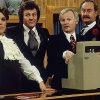
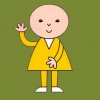
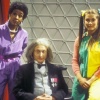
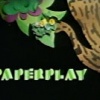

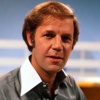
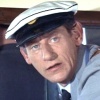
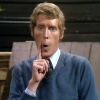
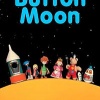
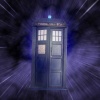
Do You Remember Play School?
Do You Remember Play School?